The Article
TCI CABLES: THE BIG CATCH UP
8th June 2018
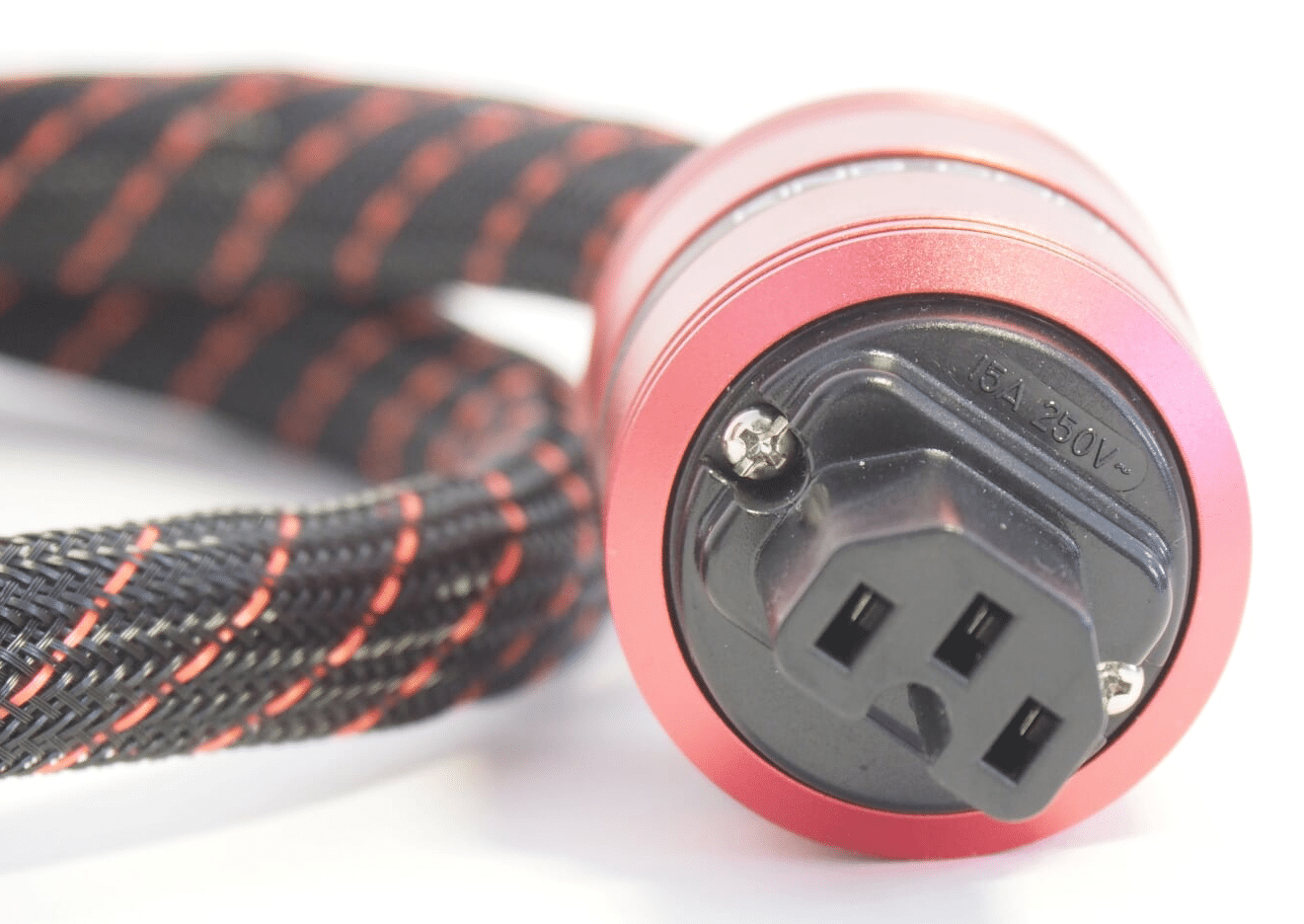
Been a while since Paul Rigby looked at any cables and associated products from TCI so he has decided to tackle a bunch in one go: Herald Constrictor and Emerald Constrictor mains blocks, Mamba and Cobra II SE interconnects and Boa Constrictor II and King Constrictor II mains cables
As I’m sure you’ve already seen, there’s a decidedly snake-like aspect to this series of cables and related products from TCI, a company that has been producing cables since 1993. I wanted to provide a broad overview of where the company is ‘at’ in terms of its product range.
First up are two power blocks: the Herald Constrictor and the Emerald Constrictor.
Both include eight cores of XPLE (on the Herald) and PTFE (on the Emerald) insulated silver-plated copper with a braided design, none-inductive, self screening construction PVC (on the Herald) and Polyolefin (on the Emerald) general insulation.
Associated with the power blocks are the mains cables. The King Constrictor features the same cable as the Temple Constrictor (not reviewed here) but with a split-braid construction used in the top of the range Boa Constrictor. With the addition of a rhodium-plated IEC plug and 16 PTFE insulated silver-plated copper conductors.
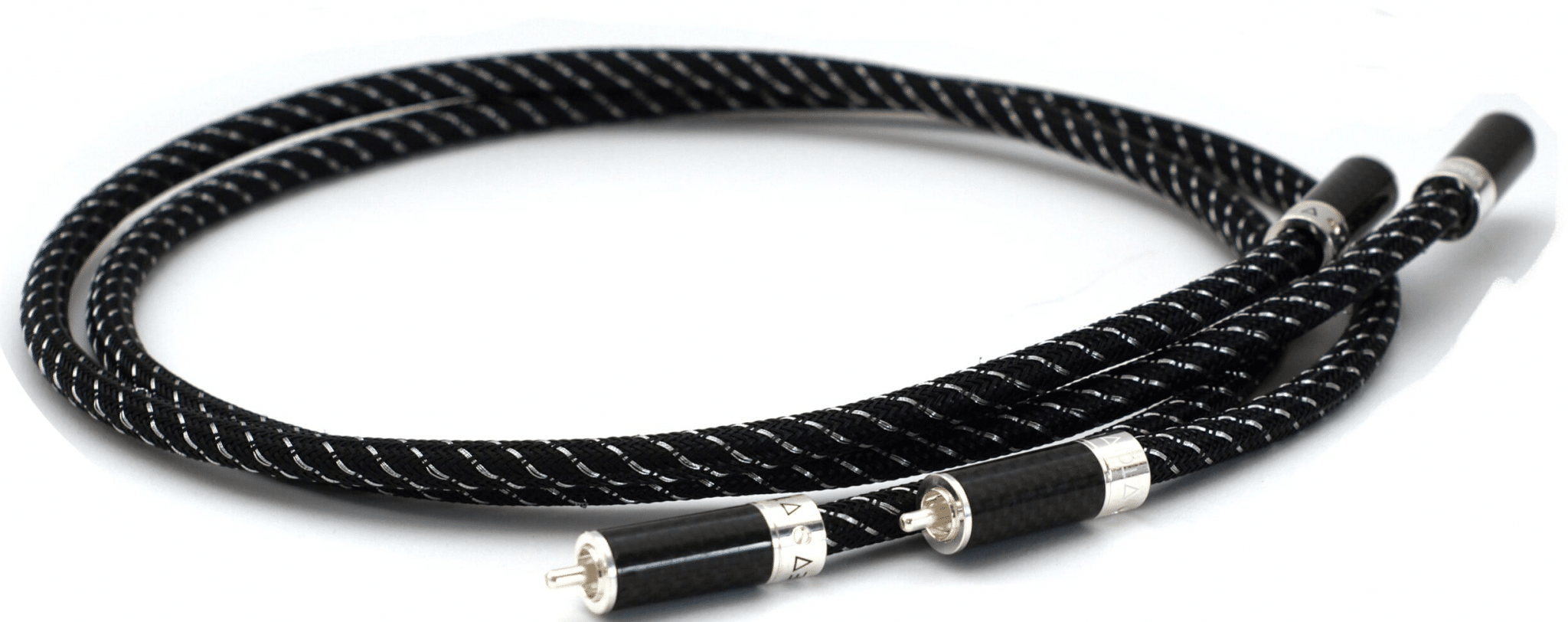
The Boa Constrictor mains lead itself uses silver and a thicker cross-sectional area. You’ll find True-Plug Plated mains connectors, a split-braid multi-earth construction and 24 PTFE insulated silver-plated copper conductors.
Onto a pair of interconnects now and the Cobra II SE is constructed of SP-OFC silver-plated “aerospace grade” alloy conductor, PTFE “aerospace grade” Kapton tape, high density double braided PC-OFC screen, silver-plated Tellurium copper centre pin and silver plated True-Plug RCA plugs.
Finally, the Mamba also has True-Plug connections but with gold-plated locking. It feature an “aerospace” PC-OFC copper alloy conductor, twin screens and lead-free, high purity silver solder.
Which is all well and good but the truth for any cable is in the listening. So how do they all sound? Will they all exhibit sonic fangs or will any of them squeeze sound quality to death?
SOUND QUALITY
I decided to test both power blocks initially using Sarah Vaughan and the Mercury original LP, Sassy Swings Again.
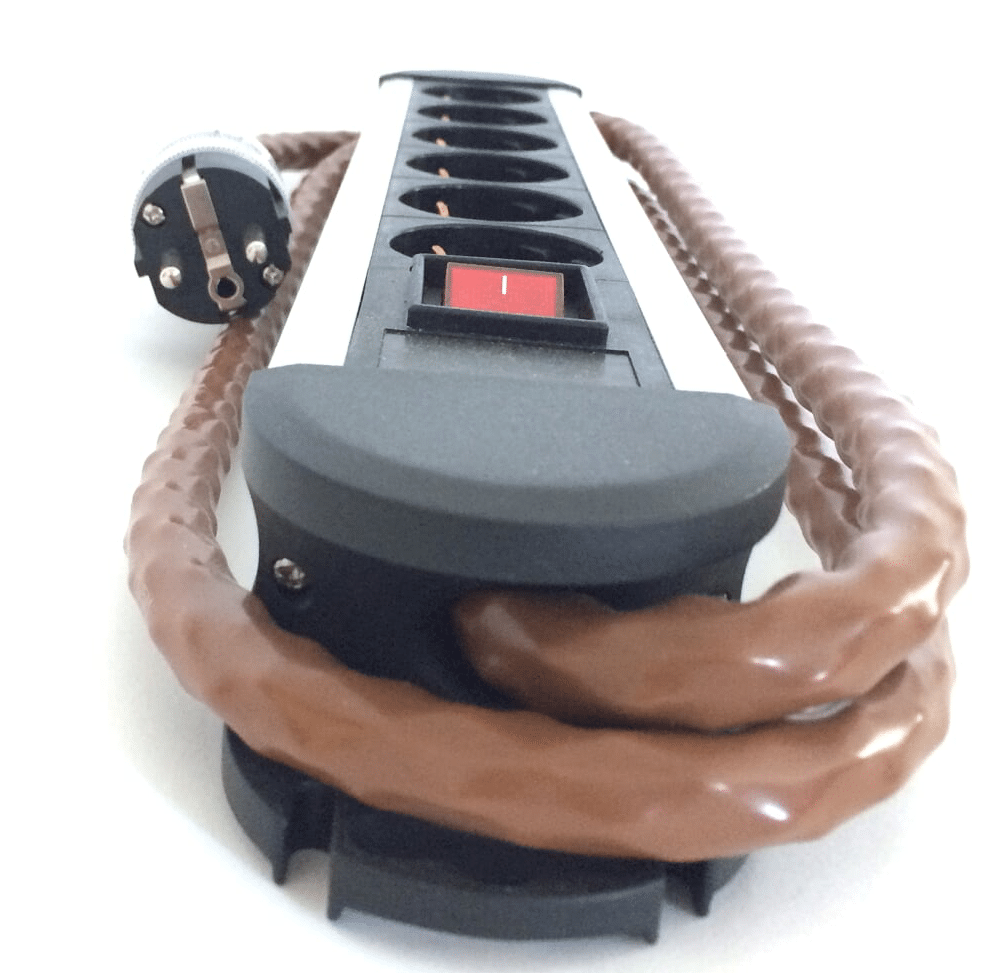
Beginning with the Herald power block, despite a slight upper midrange veiling which dulled the Vaughan delivery a touch and damped the brass a little, I was still happy to hear the even tone over the entire soundstage. Let me elaborate on that. What I heard was a warming over the upper frequencies which was not at all unpleasant. In fact, it was quite attractive and, for the price, admirable. That said, the practical nature of this slight warming was to produce a slight restriction in space and air.
There was never any sense of upper midrange glare from brass crescendos or barking from wayward frequencies. In that sense, the Herald was very disciplined and kept a pretty tight order on the overall sound. While the air and space might have been a touch choked, the bass did offer much that could be admired such as a rhythmic bounce to the lower frequencies and it allowed the pace of the double bass to be tracked easily by the ear without any blur while all of the music’s basic detail was on show and could be picked up by the ear.
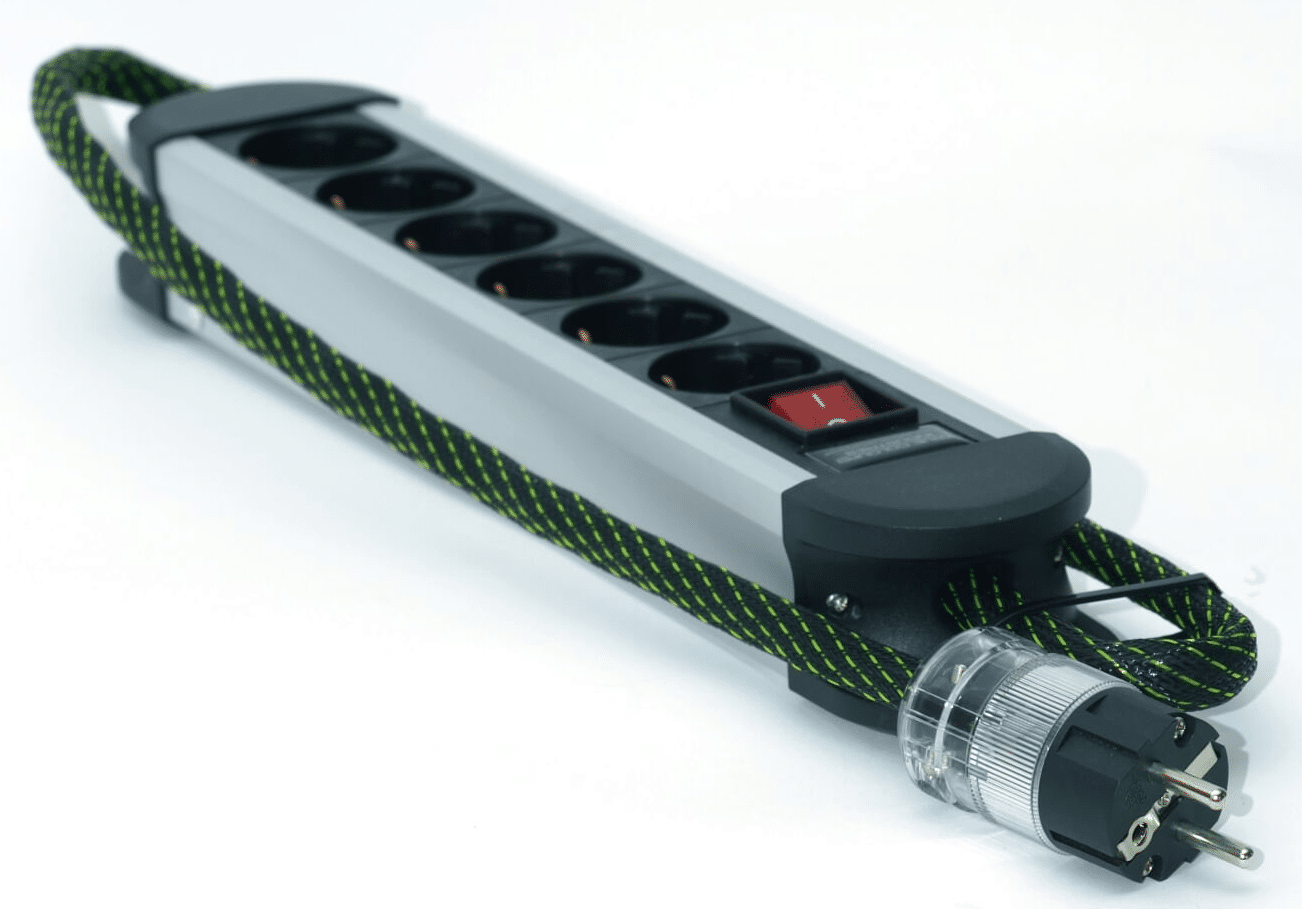
Using the same music on the Emerald power block, I noticed more detail in comparison with the Herald with the brass being insightful, vocals offering great levels of diction and bass being rounded and bouncy. How this was done was intriguing. It sounded like the music now featured a touch of compression. The focus and precision were there, detail was present in an etched fashion without being grievous or nasty in any way. Yet there was a slightly clinical aspect to the sound which will enhance a budget system but could, also sound a little mechanical. As I say, though, a budget system will benefit by allowing the cable to dig into the mix, extracting detail for the ear’s benefit. The overall soundstage sounded fairly balanced in terms of the organisation and discipline of the instruments. Overall, for the price, the block offered decent value.
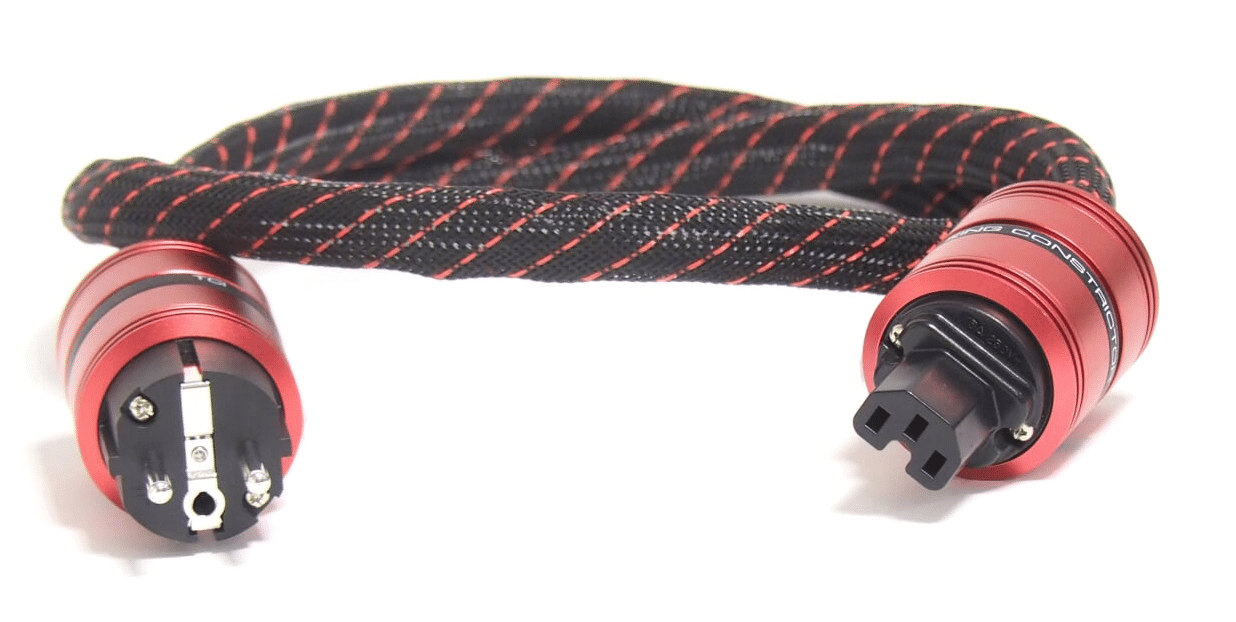
Moving to the mains cables, I tested both over different parts of my hi-fi system using the reissue of the Kansas LP, Leftoverture, via Speakers Corner.
I began with the King Constrictor II which was a very tight and firm connection at some points of my hi-fi. In fact, I had a bit of trouble at first with my phono amplifier connection because the darned thing refused to plug in but I got there eventually.
Once pushed firmly onto the connection pins though I was very happy with the resultant sound which offered plenty of space and air, opening up and broadening the soundstage a treat.
For this price point, I was also happy to enjoy the extensive detail on offer here such as the fine response from the cymbals and the complex lead guitar runs which were tracked easily by the King Constrictor II across the broad soundstage. I was also happy with the balance of the mix. That is, no one instrument or frequency dominated where it shouldn’t. There was no bass blur or midrange smear to affect the overall presentation. A cracking cable then!
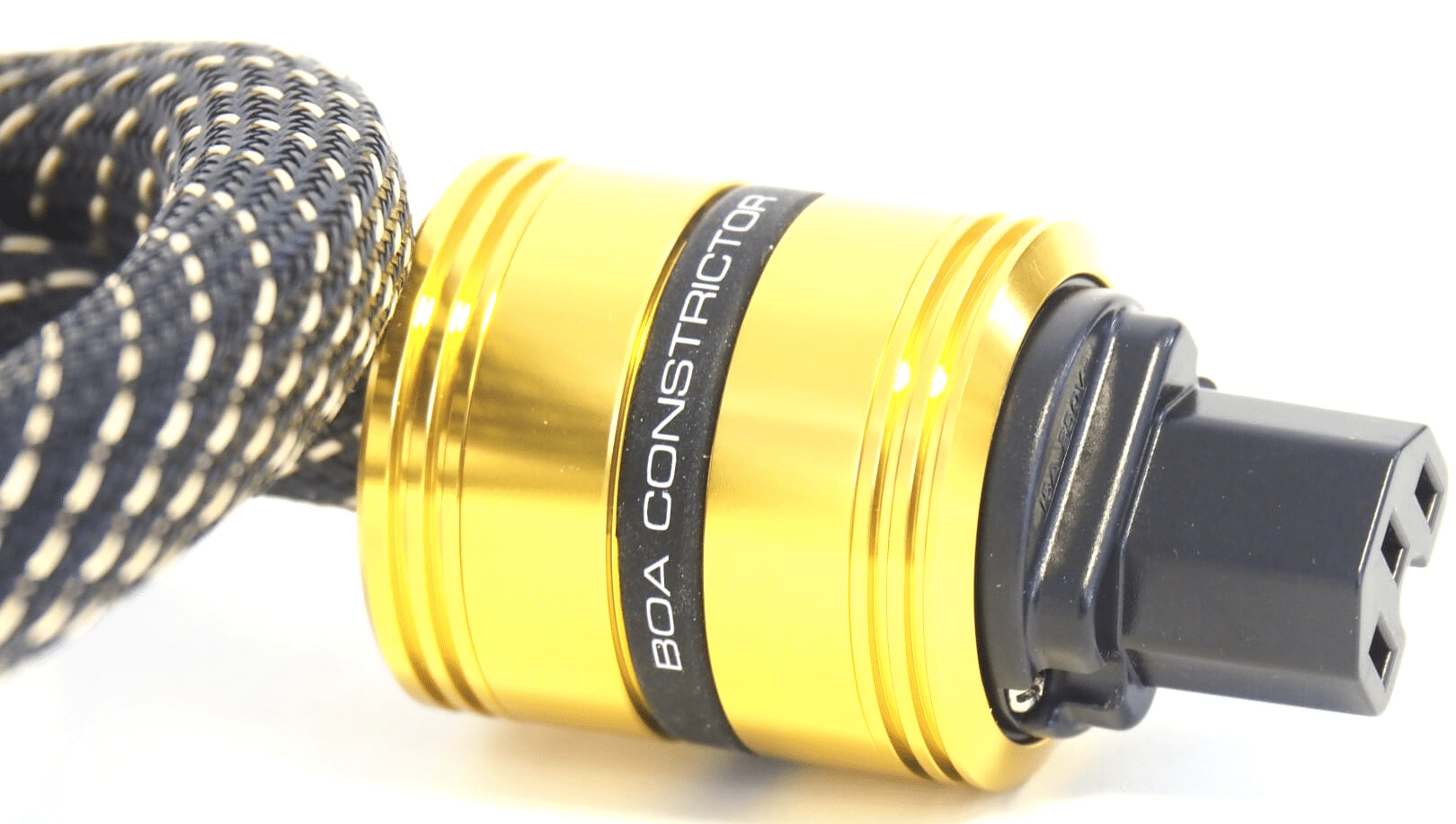
Next was the higher priced Boa Constrictor II which, basically, gave you a bigger, grander, epic picture to the one presented by the King Constrictor II. That is, bass was bolder and massy while other frequencies were injected with extra power and pizazz. The Boa Constrictor II presented a show, it gaves you entertainment, a spectacle and a full-on extravaganza. It did everything except charge for tickets. The detail was still there with welcome clarity but the Boa Constrictor II coated that with a Ta-Da!! flavour that made you want to pump up the volume and dance across the room…unless you’re using a turntable with a suspended floor. In which case you’d be tip-toeing madly.
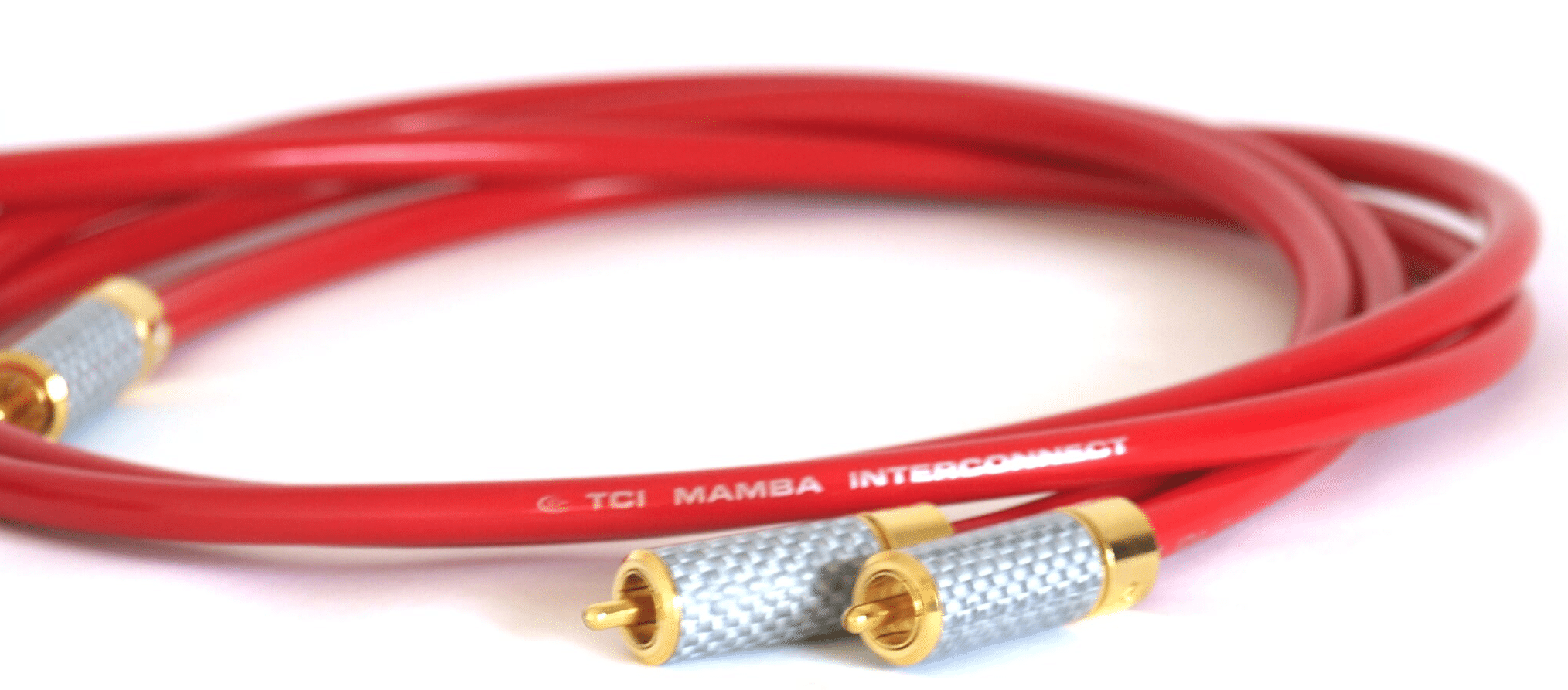
I moved to interconnects now, still playing the Kansas track and was impressed indeed with the Mamba. In fact, at this point in the review cycle, the Mamba was the best TCI product that I had tackled thus far. Mostly because of its low noise design which opened up the soundstage tremendously, allowing cymbals to not only offer a fragile response but to allow the signature pulse response of the cymbal hit to move and flow outwards. Bass was firm but never strutting, behaving itself but also offering power while the wide soundstage presented an immense amount of space for the musicians to do their stuff, allowing micro-reverb off the instruments to produce added richness and layering.

Turning to the Cobra II SE, I felt that these interconnects provided the most ‘grown up’ and balanced sound from the entire range of products on show here. There was no sense of trying too hard or forcing detail or tweaking to make do or anything else that wasn’t just natural and at ease. I know that these cables are not exactly cheap but cost doesn’t really come into it when you’re creating a balanced sound for a specific prince point. The Cobra II SE cables definitely did that, giving each frequency type space to roam without cramping the available detail. As with all of the TCI cables here, there was no suggestion of nasty frequencies, no blurred bass, no pinched treble or bright mids. Everything was well behaved but the blend of tonal realism combined with a thoroughly organic nature of the sound from the Cobra cables produced a memorable performance.
CONCLUSION
Despite being slightly claustrophobic in nature, the Herald power block is a solid product that has no particular nasty vices. The same can be said of the Emerald which added some insight in terms of detail. Both are offered at a relatively reasonable price for their performance and thus deserves a solid ‘7’ rating.
As for TCI’s mains products, the King Constrictor offered quite a selection of fine detail in a balanced and largely transparent fashion. The Boa Constrictor II maintained the sound quality of the King but did so in a larger than life fashion.
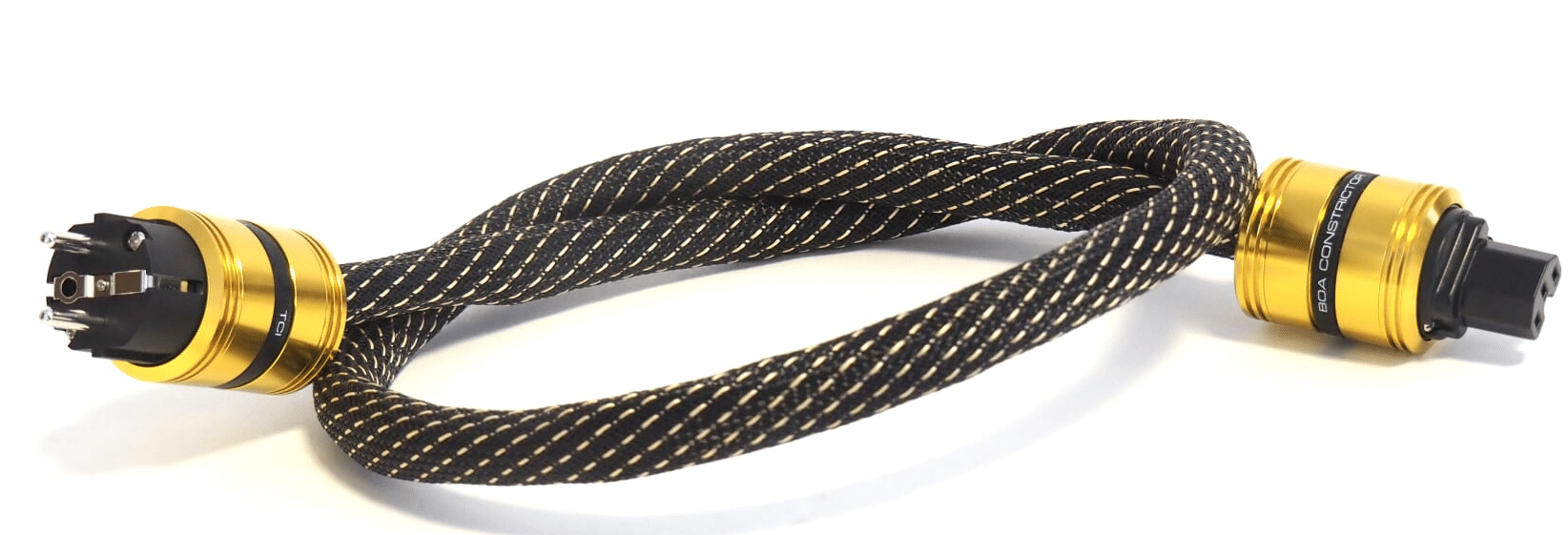
The two interconnects were both winners. The Mamba’s low noise allowed a host of fine details to emerge, giving these interconnects a fine combination of superb sound quality and value for money while the Cobra II SE cables just screamed quality from start to finished, giving the most ‘at ease’ and natural presentation of the entire test.
TCI should be congratulated for an admirable selection of cable and cable-related products that provide an ideal basis for any hi-fi system.
TCI CABLES: HERALD CONSTRICTOR, EMERALD CONSTRICTOR, KING CONSTRICTOR, BOA CONSTRICTOR, MAMBA & COBRA II SE
Tel: 07710 196949
Website: www.tcicables.com
TCI Herald Constrictor 6 Way Powerblock 1m £120, 1.5m £150 & 2.0m £180 for either UK or Schuko models
TCI Emerald Constrictor 6 Way Powerblock 1m £140, 1.5m £180 & 2.0m £220 for either UK or Schuko models
TCI King Constrictor Powerlead 1m £300, 1.5m £375 & 2.0m £450
TCI King Constrictor SE Powerlead 1.5m £475 & 2.0m £550
TCI Boa Constrictor Powerlead 1.5m £650 & 2.0m £800
TCI Boa Constrictor SE Powerlead 1.5m UK £700, Schuko £750, 2.0m UK & £850 Schuko £900
TCI Mamba Interconnect 1.0m £200
TCI Mamba XLR interconnect 1.0m £250
TCI Cobra II SE Interconnect 1.0m £400
TCI Cobra SE II XLR Interconnect £500
Herald Power Block
GOOD: warming yet smooth mids, detail, lyrical bass, price
BAD: slight midrange veil
RATING: 7
Emerald Power Block
GOOD: fine detail, disciplined soundstage, characterful bass, midrange insight
BAD: slightly clinical mids
RATING: 7
King Constrictor II Power Cable
GOOD: airy midrange, broad soundstage, balanced presentation,
BAD: overly firm connection on occasion
RATING: 8
Boa Constrictor II Power Cable
GOOD: big bass, bold midrange, broad soundstage, detail
BAD: more show than quality
RATING: 7
Mamba interconnect
GOOD: low noise, instrumental separation, dynamic reach, broad soundstage
BAD: nothing
RATING: 8
Cobra II SE interconnect
GOOD: mature midrange, tonal realism, low noise, organic bass
BAD: nothing
RATING: 8
REFERENCE
Don’t forget to check out my Facebook Group, The Audiophile Man: Hi-Fi & Music here: www.facebook.com/groups/theaudiophileman for exclusive postings, exclusive editorial and more!]
Origin Live Sovereign turntable
Origin Live Enterprise 12″ arm
Transfiguration Proteus cartridge
Icon PS3 phono amplifier
Aesthetix Calypso pre-amp
Icon Audio MB845 Mk.II monoblock amplifiers
Quad ESL-57 speakers with One Thing upgrade
Titan Audio Styx power block and cable
Merlin Cables Tarantula mains block
Black Rhodium Aspect mains lead
Black Rhodium Stream mains lead
Tellurium Q Black interconnects
Tellurium Q Blue interconnects
Blue Horizon Professional Rack System
Harmonic Resolution Systems Noise Reduction Components
All vinyl was cleaned using an Audio Desk’s Ultrasonic Pro Vinyl Cleaner




Hi Paul: Excellent review !
Nicely done.
peter jasz
I’m surprised your head’s not spinning after reviewing that lot! I always have a chuckle at the names of the various cables üòä Anyway well done on a very informative and witty attempt at making the complex sound simple…..
Anyway here’s the question I alluded to earlier :
Why do most, if not all power cables, have 13 amp fuses installed? I won’t bore you with a brain melting session I had proving to myself that they only need a three to five amp fuse installed as the current used is minimal. After all the fuse in the plug is only there to protect the cable. Too high a fuse rating and your lovely expensive fat cable is fried. I currently (no pun intended) use a much touted but reasonably affordable cable/mains block which the maker claims it somehow runs at a higher current than the competition. This, of course, means better sound along with all the other attributes like lowering the noise floor through better shielding and good basic design etc etc. In fact the block is rated at 16 amp!!!!! Now this claim and the 13 amp fuse business has me completely flummoxed üò∂ Either I’m going mad or I need to eat 13 amp fuses for breakfast instead of the poor Shreddies I, er, usually shred lol!
Finally, I’ve already put the above query to all and sundry and all I’m getting is a zero response. I haven’t mentioned the name of the company for obvious reasons so I’ll say no more…..
Over to you Paul……
Oh and here’s a thing : I replaced the 13 amp fuse in another block I used to use for a five amp and, guess what, it didn’t blow. They to made similar outlandish claims. I rest my case…..
I haven’t got a clue – Dermot. So let me confront TCI with this and see what they come up with. I’ll get back to you ASAP. One semi-related thing, a more general point, I’m not sure ‘shielding’ is the panacea it pretends to be. There’s a school of thought that shielding also traps noise in the cable itself, making things worse. Erasing or more aptly ‘draining’ noise (as opposed to blocking) by other means seems to be more effective. So grounding or converting noise to heat seems to be a better approach. Anyway, I’m wandering off the point. I’ll talk to TCI about your issue.
Good luck!
Here’s something I tried to avoid above. Now pay attention!
How To Calculate The Fuse Rating:
Using the guideline that the fuse is rated at 125% of the normal operating current.
Power (Watts) = Current (Amps) x Voltage (Volts)
Therefore:
Current = Power/Voltage
Therefore:
Fuse rating = (Power/Voltage) x 125%
OR, put another way:
Fuse rating = (Power/Voltage) x 1.25
OR, put another way:
Fuse rating = (watts/volts) x 1.25
Note the power of the appliance – usually in the appliance manual,
Note the voltage (240 volts in the UK).
Use the next highest fuse rating after the calculation.
Say the calculated fuse rating is 2.2679 amps, use a 3 amp fuse.
Say the calculated fuse rating is 4.9431 amps, use a 5 amp fuse.
Say the calculated fuse rating is 8.9032 amps, use a 13 amp fuse.
Say the calculated fuse rating is 10.6421 amps, use a 13 amp fuse.
Thanks for that Dermot – I’ll keep that info for future use 🙂 I have heard from TCI that it is on the case so hope to get back to you soon with their opinion on the issue.
No bother! This should very interesting üòâ
This is direct from TCI, Dermot – hope it helps: “There are two reasons that 13A fuses are used in TCI mains cables, the 1st is simply for practical reasons, we do not know what they are going to be attached to. Whilst a 5A or even a 3A fuse is more than sufficient for the current requirements for most pieces of Hi-Fi equipment, they may be used to connect high power equipment – large power amps, mains regeneration units, or be used to connect power to distribution blocks which could have multiple items attached. It is therefore better from a manufacturers point of view to plan for the higher load, than be faced with calls of ‘my mains lead doesn‚Äôt work’ and as a result the negative feelings and publicity that may follow.
“The other reason is arguably more subjective and will depend on the individual – 13A fuses sound better than 5A fuses. It follows one of the basic principles around higher quality mains leads, which is one of lower resistance and a larger surface area for an EM wave to propagate across. It can ultimately be taken further by saying that EU leads sound better than UK ones, they don‚Äôt have a fuse at all.
“Each piece of Hi-Fi should have its own fuse internally to protect it from fault conditions that may cause it to draw more current than its design specifications. If a fault develops in the cables (the most common reason for this is external damage) then the appropriate circuit breaker in the consumer unit will trip. However, the UK continues to require mains fuses be fitted in plugs to do two things. One is to protect the building wiring from high current conditions and the internal heat build-up as a result and the other is to provide local protection rather than have a whole ring trip, less critical in domestic environments, but more so in the service sector or in industry.
“I have kept the answer fairly none brand specific as the above could apply to any brand, not just TCI cables products.”
Thanks Paul. That is one of the best responses to a query I’ve come across in a long time. No mumbo jumbo and no ‘blind-us-with-science’ answer either. All very practical and sensible. Well done TCI and thank you for taking the time to explain everything. I’ll say one thing though: I envy the chap who can hear a difference between a 13 and 5 amp fuse üòâ
Thanks Dermot and I’ll pass on your good wishes.
(RE: Cable, Fuse ‘Ratings’ etc.)
Dermot: There are ‘linear’ thinkers (and listener’s) and abstract types.
Indeed, although music (and its sound reproduction) is based in science (mathematics) the final product has nothing at all to do with the discipline. In fact, quite the opposite.
Judging by the tone of your remarks, you strike me as the kind of chap that has no personal-professional experience to draw conclusions whether a 13A vs. 5A fuse sound different. Naturally, it’s not the fuse itself, but rather the impact upon the electro-mechanical-acoustic properties within it’s intended application.
It is in these scientific endeavors (the study/examination of component, cabling and “fuse” interactions) that too many ‘by-the-book’ types fall (and fail) miserably. in comprehending.
Today’s study of many science-based academia disciplines from Fluid Dynamics to the most compelling of all: Quantum Physics (Mechanics, Computing etc.) shall unravel the great mysteries that appears to be necessary for ‘By-the-Book-Types’ to, well “buy into”.
In the meantime (over the past 40-years from my recollection), passionate music lovers (and even every day, non-audiophile types) marvel and enjoy the sheer enjoyment of finely reproduced music.
You see, some (audiophiles) keep asking questions: experimenting, evaluating, comparing -and judging the merits within a wide variety of components and accessories. And you know something, with enough entrants, a solid consensus forms -offering up the desire (and need) for further investigations.
Finishing up, I admire the social acceptance of many European country’s (notably UK, Australia) that encourage wildly varying communication to unfold -including some of (most of my, all of -lol) my sharp-tongued replies. In North America (particularly the USA), the very notion of Free Speech, has lost its meaning, and significance, as far too many publications/ forums censor and/or refuse to print/publish: some content.
Censorship. Its significance and importance has been observed throughout history and remains a troubling and concerning reality for those that understand it vital to the human condition.
Censorship must be deeply frowned upon -yes, even today. In fact, perhaps more so.
It has been and remains, the Tyrants method of choice -the bane of human evolution.
The sacred freedoms we enjoy today must be maintained -we must remind ourselves that all of such freedoms are a rather new phenomenon (over the course of human evolution).
OK then, back to regular scheduled programming.
Mathematics, Science, P-5 type stuff are disciplines I subscribe. It’s essential. The foundation of all we have and enjoy today. Yet, we must also cognizant of what science does not know -any honest (make that intelligent) mathematician-academic should be well aware that all amazing technical/scientific discoveries also introduce further questions -and uncertainties.
For me, as has been over the past 40-years, I’ll use the inimitable truths presented by the honest communication music conveys -that our hi-fi must interpret, unravel and ultimately convey.
peter jasz
“Count not the days, but make the days count ..” -Mohammed Ali